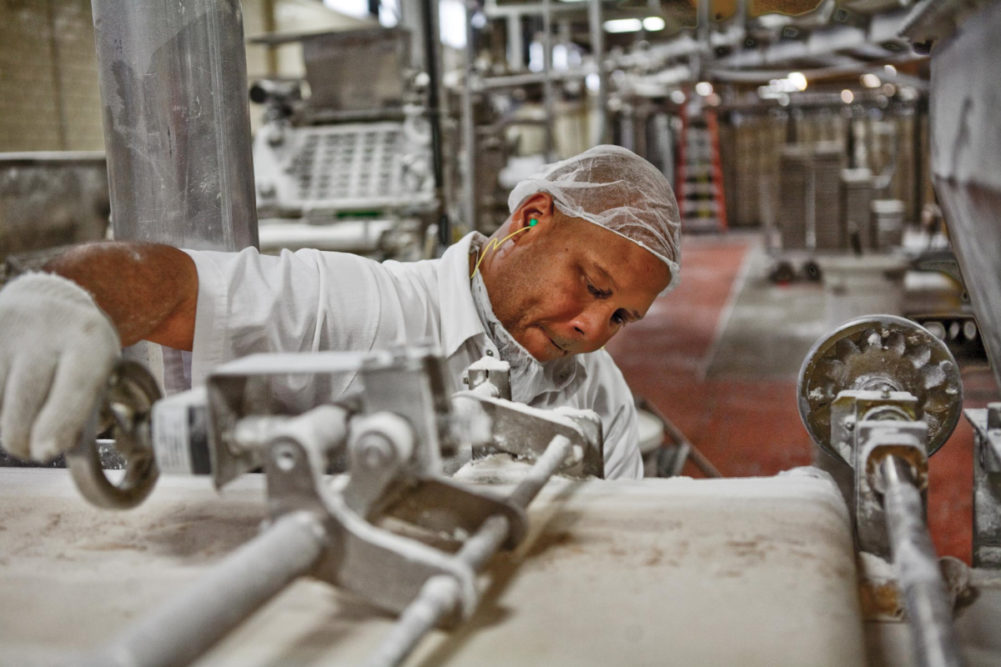WASHINGTON — The pivotal roles played by the nation’s agriculture and food industries as employers, taxpayers and providers of the food and sustenance required to power the entire economy were the subjects of an illuminating new study commissioned by 33 food and agriculture organizations, including the American Bakers Association and the National Grain and Feed Association, and released on March 23.
The 2021 Food and Agriculture Industries Economic Impact Study was conducted by John Dunham & Associates. Its findings may be viewed at www.FeedingTheEconomy.com.
The study estimated the number of jobs in food and agriculture-related industries, the wages and benefits paid to their employees, and the value their production adds to the economy. It also estimated the economic impact of suppliers that support the food and agriculture industries, as well as that of downstream industries that are supported by the spending of those directly employed by the food and agriculture industries and by those employed by firms dependent on those industries.
The study found food and agriculture industries directly employ about 19.3 million Americans who earn wages and benefits totaling about $683.45 billion. The study indicated direct employment of the food and agriculture industries was equivalent to 12.9% of all US employment.
The value added to the economy by the production of those directly employed in the food and agriculture industries was estimated at $2.7 trillion annually.
The study estimated the food and agriculture industries are responsible for generating 10.74 million jobs in supplying industries that, in turn, contribute about $2,255.9 billion in economic activity.
The study further found spending by those employed in the food and agriculture industries and in firms directly dependent on the sector generated a further 10.67 million downstream jobs and $2,017.3 billion in economic impact.
In all, the study indicated the livelihoods of 40.7 million Americans were directly or indirectly dependent on the food and agriculture industries. Those American workers collectively were paid $2.04 trillion in wages and benefits.
The study’s analysis provided not only national overviews but also breakouts of the food and agriculture sectors’ economic impact by state and congressional district.
“Throughout the global pandemic, America’s food and agriculture sectors have worked tirelessly feeding America’s families and our economy,” said Robb MacKie, president and chief executive officer of the American Bakers Association. “We could not be more proud of our association’s baking and supplier members who fueled our great nation despite unprecedented challenges. We hope policymakers will consider this powerful economic impact as they make key decisions and shape policy.”
Mr. MacKie said the ABA was delighted to be a part of the launch of the updated research on the FeedingTheEconomy.com website.
“This information reinforces the previous Council for Economic Development study that listed the food and beverage industry as the largest manufacturing sector of our economy having a significant positive trade balance impact,” Mr. MacKie added. “The baking industry generates more than $154 billion in economic activity annually and employs almost 800,000 highly skilled people in more than 1,600 facilities.”
Mike Seyfert, president and CEO of the National Grain and Feed Association, said, “On this National Ag Day, the NGFA celebrates the noble purpose this nation’s grain, feed, processing and export industry performs in transforming the American farmer’s bounty into safe, nutritious, sustainable and affordable human and animal food.
“As the COVID-19 pandemic clearly demonstrated, a reliable food and fiber supply chain is critically important to meeting the needs of families and businesses across the nation. The new Feeding The Economy report emphasizes the tremendous contribution of our industry in also feeding and growing the nation’s economy.”






